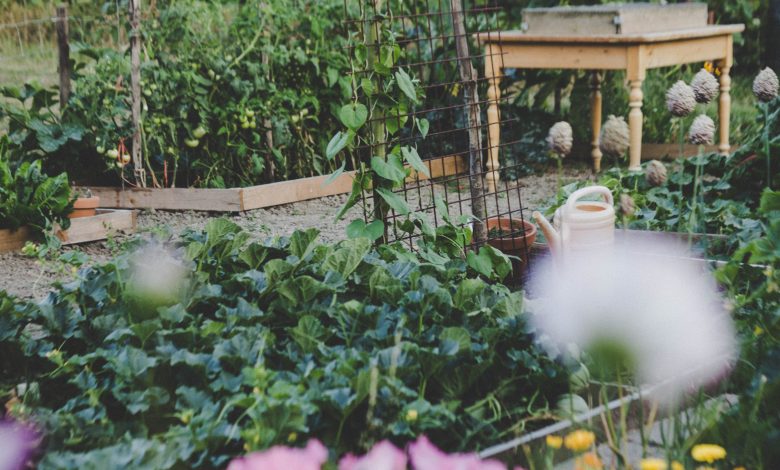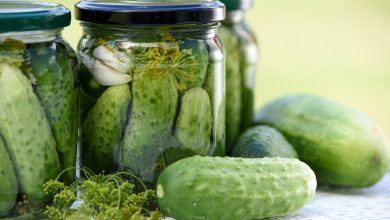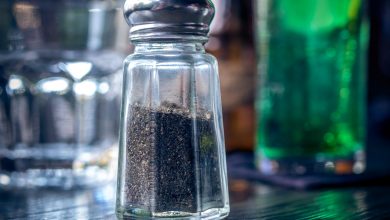Companion Planting for Food Gardens

Growing a food garden takes quite a bit of planning and hard work to be truly successful. Did you know that some vegetables grow better when planted together? This is called companion planting. Interestingly, the opposite can be true as well, and some plants should not be planted together. In this post, we discuss some great choices for companion planting to help your garden really flourish. We also talk about incompatible cultivation to avoid to help keep your garden producing all season long.
How Does Companion Planting Work?
Pest Control
Most people know that proper sun, water, and soil are imperative to making plants grow. Another big part of the equation is beneficial insects. It can be easy to think that all insects are harmful, when in reality, this is not true. For example, honey bees are insects that should be welcome in any garden. Bees move from flower to flower, spreading pollen. This pollination inspires more flowers in the garden, which leads to a higher production of fruits. Earthworms are another beneficial creature in the garden. Earthworms naturally cultivate the soil. This creates air pockets in the soil, which are helpful to plant roots. They also help to improve drainage. Improved drainage means water can move more freely through the soil. Plant roots are then able to take up the water more effectively.
So, what does all of this have to do with companion planting?
Individual plants attract certain beneficial insects. Other plants do not attract these beneficial insects. So planting something that attracts beneficial bugs next to something that doesn’t exposes both plants to the benefits. Honey bees, just one example of these good insects, do not appear in gardens by accident. They are drawn to plants for a particular reason. So as a gardener, it is a good idea to do everything you can to get those bees to come for a visit.
The same is also true in reverse. Some plants attract insect pests. These types of insects can decimate a crop when an infestation takes control. Some gardeners, and most often mass non-organic growers, resort to pesticides to control pests. Companion planting done appropriately can act as a natural harmful pest repellent. Growing fragrant plants, like an herb garden, alongside susceptible vegetable plants can confuse the pests. The overwhelming decoy scent masks the smell of the plant the insect is attracted to. Therefore, pests are not able to find their intended targets.

Weed Suppression
Companion planting does not end with insects. There are several other benefits to companion planting. One of the best ones from a maintenance perspective is weed suppression. Many vegetables and fruits grow in a sprawling or spreading habit. These include vegetables such as potatoes, cucumbers, and squashes. Because their foliage spreads outwards, it covers a lot of open soil surfaces. Weeds cannot penetrate through the foliage and therefore do not pop up close to these veggies.
To truly benefit from companion gardening, try planting sprawling plants with upright plants. The soil area around the vertical plant typically can get overtaken by the sprawling soil. Thus, it is recommended that there is no weeding around the upright plant. These small considerations and understanding of what and what not to do with plants can help ensure your garden thrives in the best environment.
Shade
Another benefit comes in the form of shade. Some plants are shade tolerant or may even be low light plants and are therefore intolerant to the sun. It can be very difficult to get shade if there are no trees or buildings around your veggie garden. Tall, full sun plants grown next to smaller plants can provide that much-needed shade. As a bonus, those tall plants can provide shade for people working in the garden on those hot, sunny days.
Support
Tall plants provide another use as well. Plants, like peas, need some sort of support to grow. Often gardeners use lattices, fences, or trellises as this support. Obviously, these support systems cost money, take time to install, and can degrade over time. Tall plants can actually be used as the support system. The climbing plants can grow up the tall plant without causing harm. This saves space and money. Growing like this also allows for more room in the garden to grow other plants.
Soil Health
Individual plants help to improve soil health. For example, the ground cover plant, clover, is excellent for making nitrogen available in the soil. Nitrogen is one of the most essential nutrients to plant health. Nitrogen is actually what makes plants green. So when clover is planted, it fixes the nitrogen in the soil. Not only can it rebalance the nitrogen, it also impacts other plants, which are then able to use the nutrients because there is such an abundance of nitrogen in the soil. Deep-rooted plants can also improve soil health. Because their roots reach so deep in the soil, it can help bring more nutrients to the surface. Try growing shallow-rooted plants next to deep-rooted plants. The shallow roots can be exposed to more nutrients and therefore become better.
Improved Plant Health
Companion planting can also lead to improved plant health. When a plant is grown, it leaves its mark on the soil. Each new plant grown changes the biochemistry of the soil. This change in biochemistry can be beneficial to other plants grown in the area. While this may be true, it is much harder to plan for, anticipate, and regulate. In a way, if you are starting a garden for the first time, it is recommended to plant with new soil and fertilizer, this way at least you can have some say in the biochemistry of the soil. Remember, if your garden does not grow fruits or vegetables the first year, do not be too hard on yourself. It could be that your soil and the environment is adjusting to the change. Certain plants and flowers are a hit and miss; it can take a few seasons before a good crop comes in.

Companion Planting for Pest Control
Cauliflower is a staple in many gardens. Unfortunately, they are particularly susceptible to cabbage flies. A great and natural way to fight this is by planting zinnias. Zinnias are annual flowers that attract ladybugs. Ladybugs are the natural predator of cabbage flies and therefore can help protect the cauliflower from cabbage fly devastation.
Codling moths can significantly harm apple trees. Consider growing lavender plants near apple trees because these moths find the scent of lavender particularly unattractive. Be aware that, in many climates, fruits and vegetables are annual plants and do not grow back after winter. Lavender, however, is a perennial and continues to regrow in the same place each season. So make sure you plant it where you like it, as it is not going to be easy to uproot the tree to another spot.
Mint plants are an excellent addition to any food garden. Mint keeps cabbage moths and ants away from the garden. It is essential to recognize that mint is an herbaceous plant with very active roots. It spreads very quickly, so it needs room to grow and extra work to keep its growth in check.
Cabbage moths are particularly harmful to a large number of vegetables. This includes cabbage, radishes, cauliflower, kale, broccoli, and turnips. Thankfully, there are quite a few other plants that ward off the cabbage moth. These include catnip, rosemary, sage, and hyssop. Another good tip is to plant the vegetables far away from each other. That way, if cabbage moths do appear in your garden, they may not be able to attack everything.
Ladybugs, praying mantises, and spiders are beneficial because they prey on insects that are harmful to vegetables. Individual plants, like parsnip, dill, parsley, and carrots, attract beneficial insects. Plant these throughout your vegetable garden to help control insect pests.
Cutworms are particularly harmful to potato plants, pepper plants, carrots, corn, and celery. Cutworms find tansy plants quite repulsive. So try planting tansy near any of these veggies.
To protect tomato plants from tomato hornworms, try growing basil and dill in nearby areas. As an added bonus, tomatoes and basil are classic pairings in the kitchen.
Marigold flowers are an excellent annual plant for a vegetable garden. Nematodes are particularly harmful to the root systems of many vegetables. Marigolds can repel nematodes to keep roots safe. Marigolds also have bright yellow flowers that honeybees are particularly attracted to.
Consider planting nasturtiums as a sacrificial plant. While they are beautiful to look at with their abundance of yellow and orange flowers, they are also quite attractive to aphids. They aphids focus all of their energy on eating every last bit of the nasturtium, leaving other plants in the garden alone.
When you are companion planting for insects, it is important to remember that, while one plant may deter another, it could attract another species. Mixing up your garden with an array of pest repellent flowers can be the best solution to trying to cover all your bug basics.
Companion Planting for Shade
Corn is a very tall growing vegetable that is quite versatile for companion planting. Spinach, swiss chard, bush beans, and many leaf lettuces do quite well when planted next to corn. The corn provides the part-sun conditions that these plants genuinely favor. If you like the look of sunflowers in a garden, they also make excellent shade casting plants.
When thinking of planting for shade, it is also important to consider the soil before and after. Some plants may actually dry out the soil, or the roots of the plant can infiltrate into other parts of the garden. Consider how much shade you want to have in your garden and property and speak with a specialist on the options of plants that can offer shade. Remember, trees aren’t the only thing that can give shade.
Companion Planting for Support
Again, the good vegetable corn is a key player here. Corn grows so tall and straight that it is great for vegetables like pole beans and peas. Keep in mind, peas are cool-season crops. This means they only do well in the spring and fall. Corn takes a while to grow, so spring peas likely cannot use corn as support. But corn can absolutely support a fall planting of peas.
Companion Planting for Weed Suppression
Basically any spreading plant can be used for weed suppression. These are things like cucumbers, squashes, potatoes, eggplants, and melons. Plant upright vegetables like tomatoes, brussels sprouts, peppers, and asparagus next to vining veggies.
If you are unsure about what to do with weeds, you can consult a horticulturist or landscaper at a garden shop, and they can provide both natural and organic recommendations to suppress weeds from getting too out of hand and ruining the rest of your crop. Be wary though of advertisements claiming to kill weeds with a simply spray – do your research and make sure that it doesn’t impact any other aspects of your garden. Sometimes simply weeding the old-fashioned way is the way to get rid of weeds.
Companion Planting for Soil Health
Soil health planting is more about making sure individual plants are grown somewhere in the garden. The most beneficial things to plant for soil health are clover, legumes, beans, peas, and burdock. All of these either make nitrogen available in the soil or draw other nutrients up to the surface so plants can access them.
Blueberries and azaleas also have an interesting soil relationship. Blueberries prefer acidic soils. Most vegetable gardens do not have overly acidic soil. A natural way to introduce acid to the soil is by planting azaleas. Azaleas originate from mountain regions where pine and oak trees grow dominantly. Pines and oaks are acidic plants and therefore make the soil around the acidic. Since azaleas grow under these conditions, they too are acidic plants. So if you find your blueberries are not producing many berries, consider planting some azaleas near them. The azaleas are going to need some shade to work well. However, they have beautiful flowers, so they can add a lovely aesthetic appeal to your veggie garden.

Odd Companion Planting
Weirdly, stinging nettle can be a welcome sight in the garden. In most other gardens stinging nettle should be removed immediately and carefully. But when it sprouts up next to vegetables, consider leaving it be. Stinging nettle has been proven to help plants grow with vigor. Their fruits also last longer on the plant without spoiling.
Interestingly, stinging nettle is not the only weed that is beneficial to a food garden. Other weeds have been proven to help improve soil quality. Weeds tend to be native plants, which are good for the soil. When the weeds die or when trying to keep them away from desirable plants, try leaving the debris in the garden. Instead of moving the waste to compost, turn it back into the soil. This way, it can decompose underground and add its nutrients back into the soil.
Incompatible Food Plants
While it is quite apparent that companion planting has its many benefits, it is just as important to recognize that individual plants should not be grown together. In order to get the most production out of your vegetable garden, avoid growing the following plants together.
Beans and peas are awesome vegetables in the garden, but do not plant them near onions and garlic, as they can’t grow well together.
Avoid planting cabbage and cauliflower together. They are in the same family, so they attract the same pests. Broccoli should be avoided here too.
Tomatoes are great in the garden but have several foes. Do not plant them near cabbage, cauliflower, kale, corn, potatoes, or brussels sprouts.
Cucumbers are another picky vegetable. While they have many friends, like lettuce, cauliflower, and beans, keep them away from their enemies: melons, potatoes, and aromatic herbs.
Gardening Tips
While there are many proven companion plants and enemies, you may find that there more than are on this list. Successful gardening is about learning and observation. Over time, you can learn what works in your garden and what doesn’t. If a particular plant doesn’t seem to do well, try it again next year but in a different spot. You may find that the vegetable did not like its neighbor very much. In gardening, nothing is permanent, and circumstances can be changed. Do not be discouraged if some of your crops fail. Learn from the experience and make amendments next year. Gardening is about learning and bit by bit mastering the skills to help your garden thrive and survive.
Companion planting is a great way to make a veggie garden successful. It helps to bring beneficial insects and fight off insect pests. Done correctly, it can also save money by reducing the need for support and shade structures. Beyond that, companion planting can help you learn a lot about plants and their relationships in nature. Keep in mind that companion planting is not the only way to have a well-designed veggie garden. All veggie gardens require adequate watering, so create a watering schedule and keep on top of it.



